The Monkeys of Águas da Prata are Capuchin Monkeys, MACACOS PREGOS. Cebus apella.
Black-capped Capuchin Monkeys have a black face, black hands and feet. Their body is brown, with a lighter colour around the face. They are the largest of all the Capuchin Monkeys.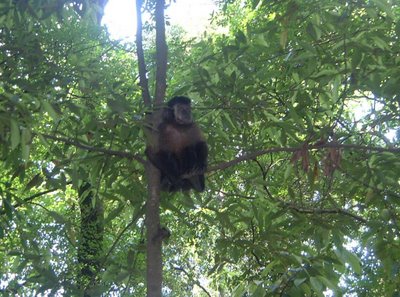
Capuchin Monkeys - Physical Description
Capuchin Monkeys are diurnal and arboreal animals. These are very intelligent monkeys that are common as pets, trained performers, and therapy animals. Capuchin Monkeys are numerous in captivity in the USA and Europe. Organ grinders have used these animals for decades.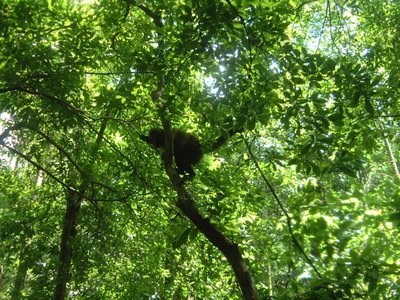
The origin of the name comes from the appearance of a black skullcap. Capuce is a French word for a skullcap. The Capuchin Monkey's hair is very similar to the cowl or capuche worn by Franciscan monks. Capuchin Monkeys have a supple and slender body with thin limbs.
The Capuchin Monkey's hand is similar to the human hand. The thumbs and big toes of the Capuchin Monkey are opposable to the other fingers and toes.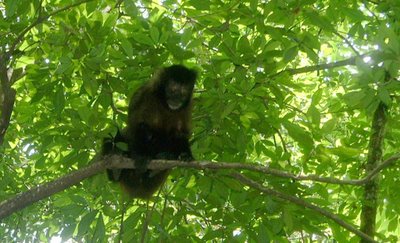
The head of the monkey is round with hairs at the back darker than the rest of the coat. The long hairy tail is partly prehensile. It serves as an anchor or prop when Capuchin Monkeys travel through the trees.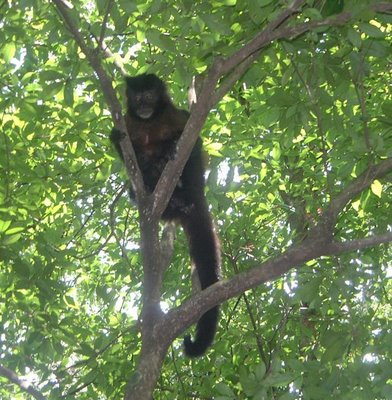
Scientific Name: Cebus Capucinus
Life Span: 15-20 years
Length: The length of the head and body is 12-22 inches. The length of the tail is approximately the same.
Weight: Capuchin Monkeys weigh 3-8 pounds
Capuchin Monkeys - Habitat
Capuchin Monkeys live in low-lying forests, in primary or advanced rainforests. They are native to Southern Central America. They are found from Costa Rica to Paraguay and Trinidad.
There are many monkeys in Águas da Prata in the forests around the city but we see them mainly in the forests at the Chalets.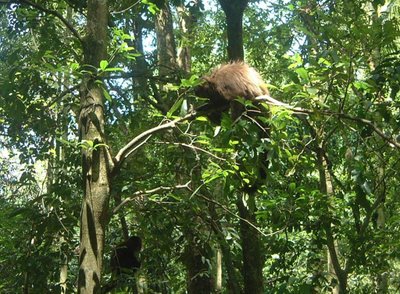
The monkeys come down from the forest in search of food two or three times a day.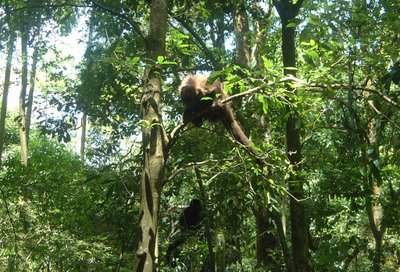
They arrive in gangs of up to 20 or more, both young and old. You can see them coming by watching the trees moving as they swing from branch to branch.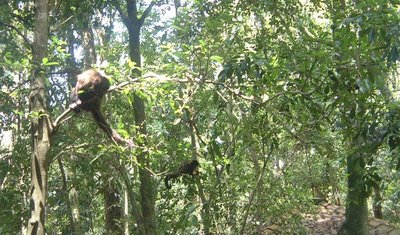
The monkeys love to eat all kinds of food, even the food that isn't healthy for them. That sounds like humans doesn't it.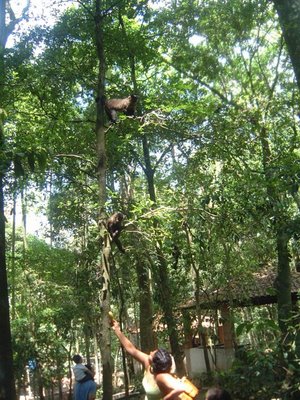
This fellow finds a fence post is handy but must watch out for the dogs.
They run to the Chales to reach people better as they look for food. They know where the food comes from.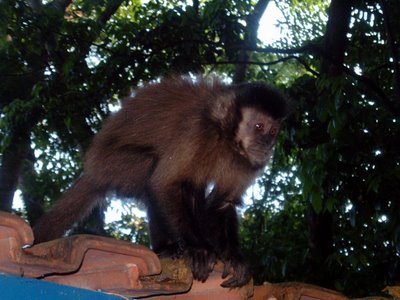
Of course they love bananas. They will stay and eat them as long as the supply lasts.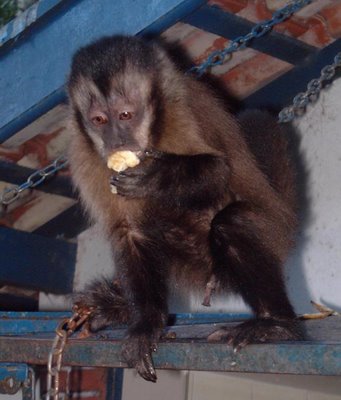
It is a lot of fun to watch them eat the bananas. They grab them from your hand and go up the tree or onto the chalet roof to eat them. There they peel them and throw the peel back at you or at the dogs in the Parque.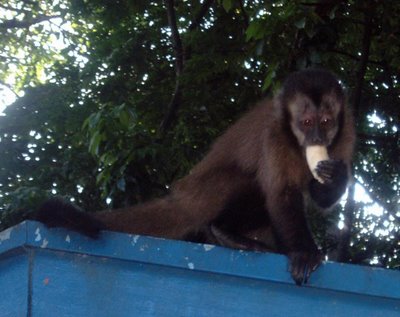
They come down any chain or branch for more food even when they have their mouths full! But they keep a wary eye out for dogs that frequent the park. When they see the dog coming they let out an alarm and run for safety.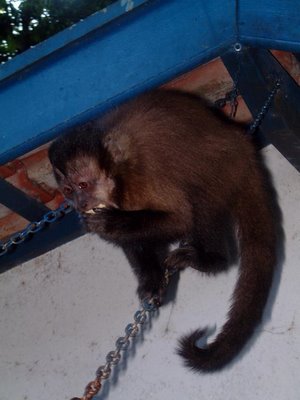
MMMMM That is delicious!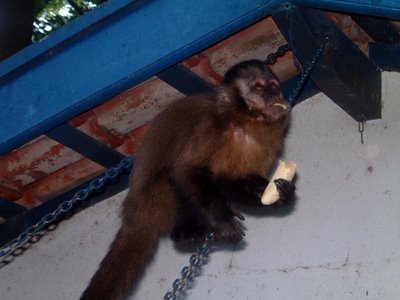
They sit on the roof waiting for someone with food to come along.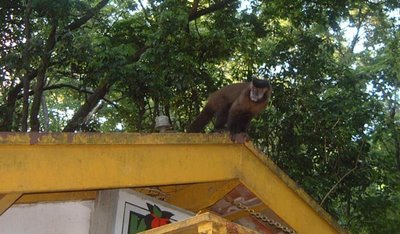
Another favourite food for them is corn on the cob.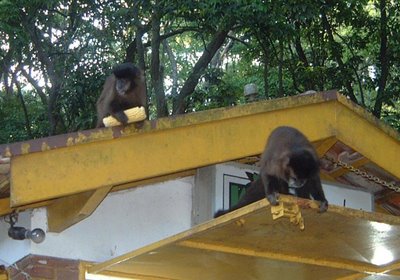
Mmmmm! What a lovely looking banana!!!! (Yes, that is my hand.)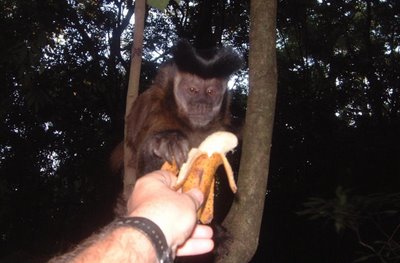
They follow you everywhere if you have bananas for them.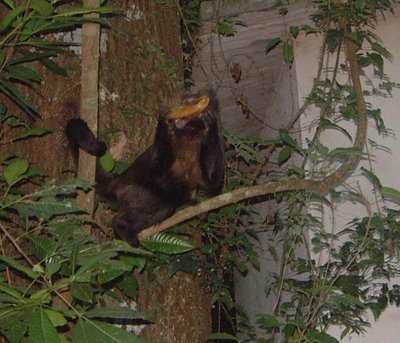
This little gal is enjoying her banana so much she doesn't bother to peel it.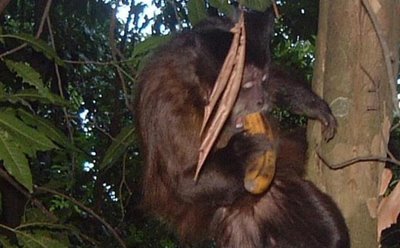
This sweetheart is less than a year old and is only twelve inches tall and probably weighs less than three pounds. She walked up to Judy and ate out of her hand.
They are very persistant in scrounging food. Unfortunately they will eat anything you hand them. There are many fried foods and sweets served in the chalets and people, not thinking, hand it to the monkeys. The City has had to post signs saying it is forbidden to feed the monkeys. But the monkeys can't read so they still come for breakfast, lunch and supper.
Now people are learning that corn and bananas are okay so the monkeys don't get much bad food anymore.
Mother and Baby look into Chalet for food.
A face a mother could love.
Up a tree!
Can you see all six on the Chalet?
Keep coming back for more monkey photos.
Photos by Urso Branco
Welcome
Powered by IP2Location.com
The Monkeys
Posted by
Urso Branco
at
Saturday, December 30, 2006
![]()
Subscribe to:
Post Comments (Atom)














No comments:
Post a Comment